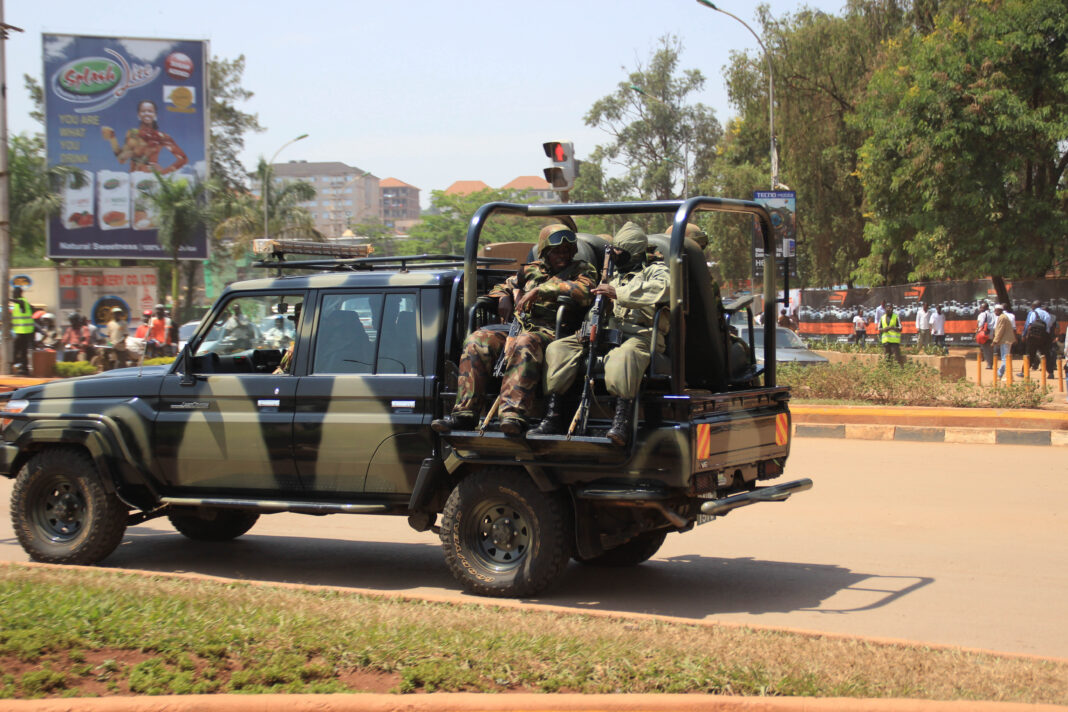by Ambra Visentin
Last Friday, suspected Islamists attacked and set fire to a Ugandan school and its dormitories in the town of Mpdonwe, near the border with the Democratic Republic of Congo, killing 42 people, almost all of them children. According to the Ugandan authorities, eight other students suffered severe burns and gunshot wounds. Some were killed with machetes. The attackers also abducted 15 girls and boys.
Who are the suspects – The school principal is among the 20 arrested
Following the massacre, police arrested 20 suspects. Among them was the principal of the school that was attacked. Those arrested are suspected of collaborating with extremists. The police blame rebels from the Congolese ADF militia. These are the Allied Democratic Forces, a rebel group that emerged in eastern Uganda in the 1990s in opposition to President Yoweri Museveni, who came to power in 1986 after five years of guerrilla warfare. Defeated, the ADF rebels moved their bases to the forests of eastern DRC. They have been blamed for the deaths of thousands of civilians. The ADF is said to have links with the Central African branch of the Islamic State (IS) terrorist militia.
Uganda is a country with a very large Christian majority: this is the reason officially used by IS to justify its murderous actions. But the reasons are not only religious. The jihadists have been targeting Uganda since it began cooperating with the Democratic Republic of Congo. For three years, IS has been the target of harsh repression in the east of the DRC, since the government declared a state of siege in the provinces of North Kivu and Ituri, on the border with Uganda. The attack on the school, less than two kilometres from the DRC border, appears to be a form of retaliation by IS to punish the Ugandan military deployment in the DRC. Major General Dick Olum told the French news agency AFP that intelligence services had reported an ADF presence in the area at least two days before the attack, underlining the need for an investigation. He said the attackers had detailed information about the school. The military said it had chased the attackers across the border into Congo. The fighters then fled into the Virunga National Park. Several rebel groups have been operating in Africa’s oldest national park for years.
The historic battle against the ADF
Uganda and the Democratic Republic of Congo launched a joint offensive in 2002 to drive the ADF from its Congolese strongholds, but so far these operations have failed to end the group’s attacks. In June 1998, 80 students were burnt alive in their dormitories during an ADF attack on the Kichwamba Technical Institute near the border with the Democratic Republic of Congo. More than 100 students were abducted.
The Islamist ADF has been operating from the Rwenzori Mountains in eastern Congo since the mid-1990s. Like the Lord’s Resistance Army (LRA) in northern Uganda, it attacks mainly “soft” targets, but also army and police patrols and smaller bases. Sudan also plays a major role: Air force transport planes have resupplied the ADF as far as airfields in northeastern DRC.
Internal reactions and those of the international community
On the military side, a first meeting between Congolese and Ugandan officials took place on Monday 19 June following the attack on the school. The two sides are also working on planning the fourth phase of the joint operation, with particular emphasis on the Mwalika valley and the Komanda-Luna section of National Road 4. Although brutal violence continues to occur in the region, the horror of the massacre was also felt abroad. UN Secretary-General António Guterres condemned the attack and called for the immediate release of the abducted children.
Cover image: Soldiers in Kampala, ©Tatsiana Hendzel on Shutterstock
























